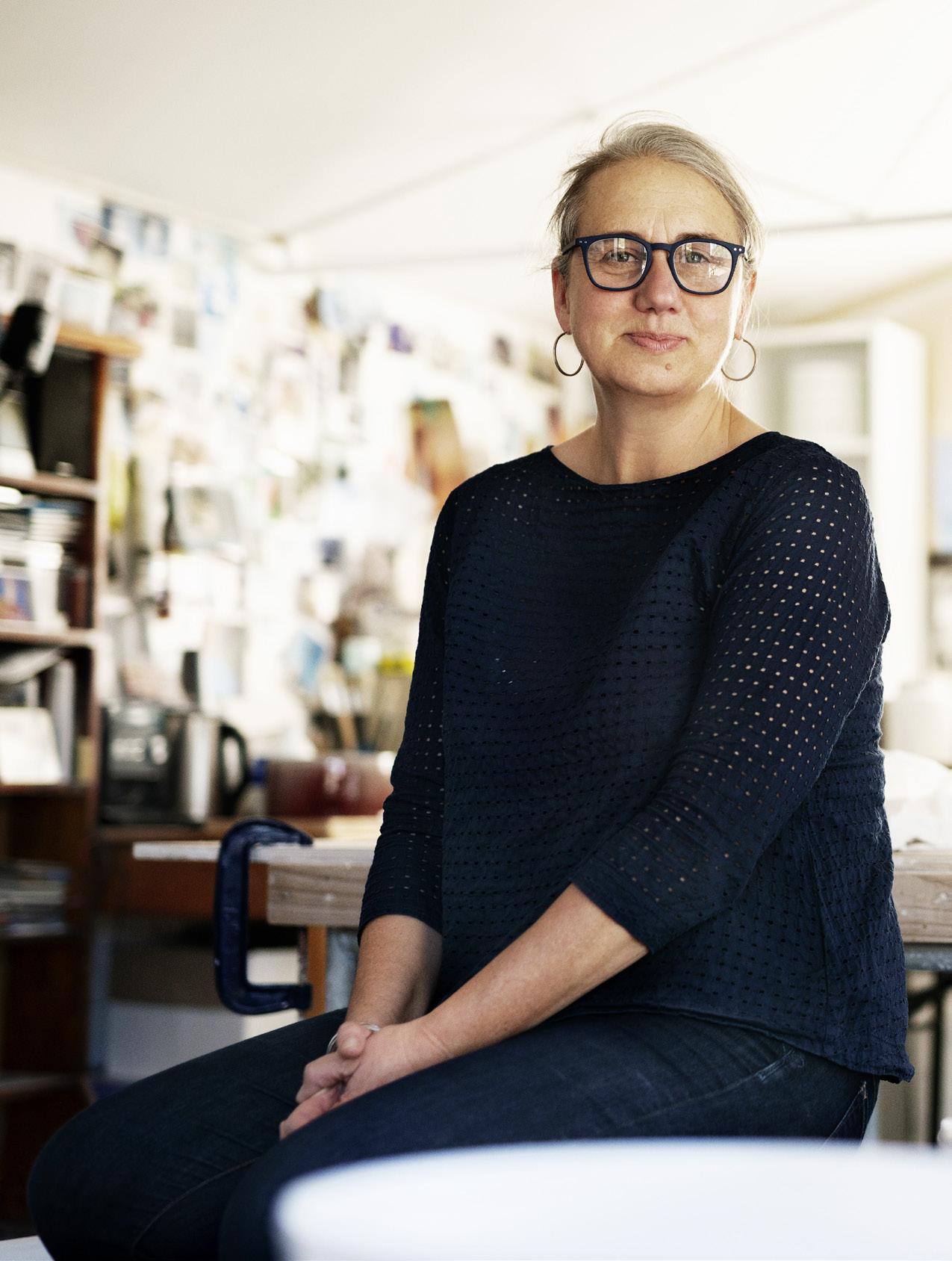
3 minute read
Kirsten Coelho: The Shaping of Changes
By Wendy Walker

Kirsten Coelho, Daphne, 2019, porcelain, satin white glaze, 27 x 26 x 23 cm, 3 pieces 27
Deeply grounded in North-Asian ceramic history and the powerful influence of the British studio movement, which encompasses the Leach/Hamada legacy, as well as the Viennese-inflected modernism of Lucie Rie, her refined interpretations of humble domestic wares nevertheless possess a distinctly contemporary and Australian sensibility.
The recipient of multiple awards, she has exhibited extensively and increasingly widely – predominantly in Australia and the United Kingdom, but also Denmark, Hong Kong, Korea, the Netherlands, New Zealand, Singapore, Taipei and the USA. Included in major international ceramic publications authored by Emmanuel Cooper, Louisa Taylor and Edmund de Waal, her work has been acquired for significant private and public collections, such as the Devonshire Collection of the 12th Duke and Duchess of Devonshire. Illustrated in both Cooper’s and de Waal’s publications, her trademark porcelain interpretations of historical Australian enamelware – distinguished by their painterly iron oxide articulations – recall the rusted and chipped enamel household items favoured by Australian artist Rosalie Gascoigne.
In Kirsten Coelho – the first major publication on her practice spanning thirty years – Grant Hancock’s immaculate images of Coelho’s porcelain vessels are interleaved with fragments of poetry and reproductions of paintings by Jean-Baptiste-Siméon Chardin, Russell Drysdale, Vilhelm Hammershøi and others. A foreword by ceramicist Glenn Barkley precedes a series of short essays, tracing the evolution of Coelho’s textured practice, in which an ever-expanding framework of art historical, literary and other cultural references has driven a succession of formal shifts – a shaping of changes. Inherited vocabularies are assimilated in hybridised, multiple forms that are astonishingly without replication. With the adoption of an ensemble mode of presentation, Coelho’s small universes of transcultural objects transcend the familiarity of their everyday contexts to enshrine narratives of migration, of transition and resettlement. Woven into, and lending context to this narrative, are disparate, yet relevant aspects associated with the immensely rich history of ceramics, including (to cite a few examples): die Porzellankrankheit and the dangerous, alchemical allure of porcelain; the significance of a lineage of women ceramicists; the importance of collaborations and friendships for the studio potter, and the ongoing art world reappraisal of ceramic history, reflected in a growing number of publications, exhibitions and the comprehensive realignment of certain museum collections. As author/curator Glenn Adamson exclaimed earlier this year: “And then, suddenly ceramics seemed to be everywhere: at the fairs, in the galleries and on auction blocks.”
Throughout her career, Coelho has been the beneficiary of scholarships, as well as state and federal funding assistance, facilitating international travel and the development of new work. In 2019, a fruitful research trip to Greece and Italy provided the impetus for the meditative, entirely white tableau, conceived for her solo exhibition Ithaca later this year at the Samstag Museum of Art. Representing Coelho’s most sculptural installation to date, it is emblematic of her bold approach towards the contextualisation of objects – enhanced by the inherent drama of an interplay of light and shadow – which made her authoritative Transfigured Night installation of seventythree exquisite porcelain objects and vessels for the 2018 Adelaide Biennial of Australian Art so memorable.
Kirsten Coelho’s exhibitions of new works in porcelain will be presented at the Samstag Museum of Art: 26 October – November.
Wendy Walker is the author of Kirsten Coelho, Adelaide, South Australia: Wakefield Press, 2020
Glenn Adamson, ‘Why the Art World is Embracing Craft’, Artsy, 15 January 2020










